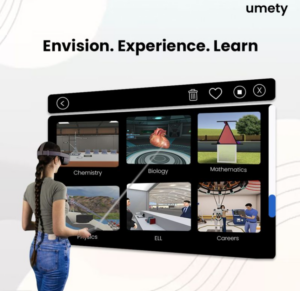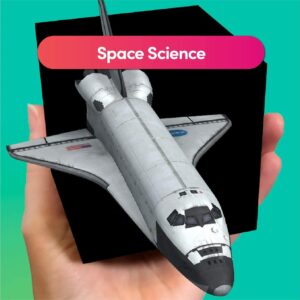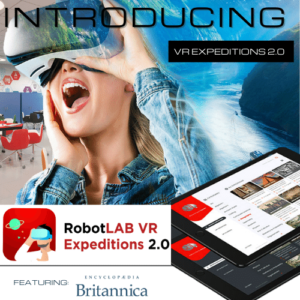Immersive learning technologies have become an integral part of modern classrooms, revolutionizing education and industry. As a classroom teacher, it’s essential to stay informed about the latest advancements in educational technology to provide the best learning experiences for students. Augmented reality (AR), virtual reality (VR), and mixed reality (MR) technologies are already transforming the way we live, work, and learn. From advanced manufacturing to healthcare services, finance, farming, and education, the adoption and integration of these technologies offer numerous benefits. In this article, we will explore how immersive learning technologies are reshaping education and industry, focusing on the applications, benefits, limitations, and the role of organizations like EDGEucating in supporting educators through this transformative journey.
Immersive Learning in the Classroom:
Immersive learning technologies have been widely applied in classrooms, and their adoption is only expected to expand further. These technologies create a virtual environment that simulates real-life experiences, enhancing student engagement and learning outcomes.
Research shows that students remember only around 30% of what they hear and 20% of what they see. However, when they have hands-on experiences, their retention jumps up dramatically to an impressive 90%. By utilizing Augmented Reality (AR), Virtual Reality (VR), and Mixed Reality (MR), educators can provide students with interactive and dynamic learning experiences.
Understanding Immersive Learning Technologies:
AR, VR, and MR are the three primary forms of immersive learning technologies. Augmented reality (AR) overlays computer-generated information onto the real world, enhancing the user’s perception and interaction. Virtual reality (VR) creates a simulated environment that immerses students in a completely digital world. Mixed reality (MR) combines elements of both AR and VR, allowing digital objects to interact with the real world.
 The Use of Immersive Learning Technologies in EdTech:
The Use of Immersive Learning Technologies in EdTech:
The integration of immersive learning technologies in education technology (EdTech) has opened up new possibilities for interactive and engaging learning experiences. Several products are making a significant impact in the EdTech world, offering diverse applications in the classroom. For example, Merge offers a range of AR and VR tools that promote interactive learning experiences. Kai’s Clan introduces coding and robotics using AR and VR, while Umety offers detailed virtual exploration opportunities and VR Expeditions 2.0 provides virtual field trips.
Let’s take a closer look at each of these products and their features.
Merge, for example, provides a range of augmented reality (AR) and virtual reality (VR) tools that promote interactive learning experiences. With Merge Cube and Merge EDU, students can explore and manipulate digital objects in 3D, enhancing their understanding of complex concepts in subjects like science, math, and history.
Kai’s Clan introduces coding and robotics using AR, allowing students to create robot avatars and program their virtual robots while viewing them in AR or VR environments. This product enables collaborative problem-solving, creative thinking, and teamwork among students.
Umety provides detailed virtual exploration opportunities. With Umety, educators can transport students to dynamic virtual environments, enabling them to participate and interact with the subject matter actively. This dynamic education-focused VR product provides educators with various virtual reality modules and simulations that cover various subjects, allowing them to align the content with their curriculum requirements. This immersive experience encourages curiosity, exploration, and deeper understanding and improves learning outcomes.
VR Expeditions 2.0 offers virtual field trips, allowing students to virtually visit places like outer space, ancient civilizations, historical sites, and ecosystems. This allows them to engage in cultural experiences that may otherwise be challenging to access. This immersive exploration enhances students’ understanding of different places and cultures. These virtual expeditions offer a hands-on experience that complements traditional lessons and fosters a deeper connection with the subject matter.
By incorporating these immersive learning technologies into the classroom, educators can provide students with interactive and dynamic learning experiences, enhancing engagement and deepening their understanding of various subjects.
Limitations in Current Research:
Despite the increasing popularity of AR and VR in education, the current research behind these technologies is somewhat limited. While initial studies have shown positive outcomes, more extensive research is needed to fully understand their impact on student learning. However, anecdotal evidence and early studies suggest that immersive learning technologies have the potential to improve student engagement and knowledge retention.
Differentiated Experiences:
One of the significant advantages of immersive learning technologies is their ability to provide students with experiences that may be unsafe or challenging to encounter in real life. For instance, students can explore historical events, visit remote destinations, or conduct scientific experiments in a controlled and immersive virtual environment. This type of experiential learning enhances students’ understanding and allows for personalized and differentiated experiences.
Limitations and Challenges:
Despite the benefits, there are several limitations and challenges associated with integrating immersive learning technologies into the classroom. Access to hardware and software can be a barrier for some institutions, and there may be a learning curve for both educators and students. Additionally, concerns about the excessive use of technology and the potential for distraction and disconnection from the real world should be addressed.
How EDGEucating Can Help:
Integrating immersive learning technologies into the classroom requires support and guidance. At EDGEucating we specialize in product vetting, providing professional development, and offering resources to educators. We do the product vetting for you to save you time and ensure budget maximization for your learning goals. We offer workshops, online courses, and personalized support to help educators navigate the implementation of EdTech, including immersive learning technologies, effectively. Our years of classroom expertise and knowledge can empower educators to leverage these technologies for improved learning outcomes. Not to mention, our product vetting and many of our resources are FREE!
Conclusion:
The successful adoption of immersive learning technologies depends on the collaborative effort of employers and educators. Integrating AR, VR, and MR into classroom practices can transform education and prepare students for the future. With the right tools, resources, and guidance from organizations like EDGEucating, educators have the opportunity to enhance student engagement, promote deep learning, and prepare students for the challenges and opportunities of the current industry.
In conclusion, immersive learning technologies are reshaping education and industry. AR, VR, and MR have the potential to create immersive and engaging learning experiences. However, it is essential to acknowledge the limitations and challenges associated with these technologies. By partnering with organizations like EDGEucating and embracing continuous research, educators can stay at the forefront of immersive learning and unlock the full potential of these technologies in the classroom and beyond.




